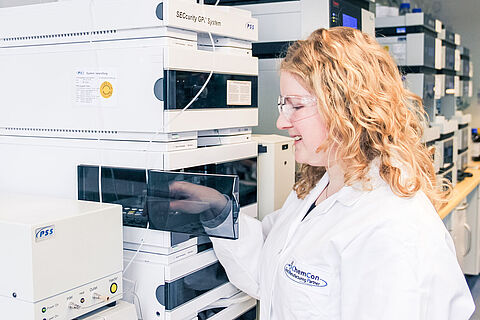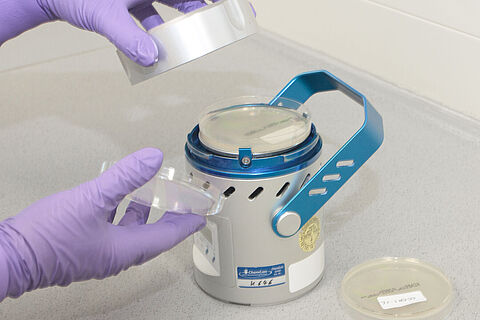Identity testing and purity control
Your samples, substances, intermediates, or starting materials, are analyzed with identity tests against qualified reference standards, quantitative, and limit tests. Comprehensive routine techniques are available. Methods can be flexibly adjusted to your requirements.
- HPLC, GC, IC
- GPC
- NMR
- FT-IR
- LOD, ROI
- KF
Elemental impurity analysis
The revised ICH Q3D guidelines for pharmaceutical ingredients require standard analysis for heavy metal impurities, which is available at ChemCon: ICP-MS (inductively coupled plasma mass spectrometry) detects trace elemental impurities at concentrations down to parts per billion. Depending on analytes and matrix, ICP–OES (inductively coupled plasma optical emission spectroscopy), also known as ICP–AES (inductively coupled plasma atomic emission spectroscopy), can be used alternatively.
Of course, classic wet-chemistry methods widely established in elemental analysis are also available.
Determination of impurities
Unknown impurities can delay the release of ultrapure fine chemicals or pharmaceutical ingredients and/or hinder the chemical process development on the way. Some impurities are easily determined with methods described under identity and purity testing. Others are more challenging and ChemCon will support you to select the most suitable techniques and to find satisfactory answers for your case. You will also benefit from the close in-house collaboration with our production team, set up to isolate, purify, or enrich impurities for analysis.
Bioburden and endotoxins
Microbiological monitoring
For microbiological monitoring and release, bioburden and endotoxin tests are performed on your substance. ChemCon additionally offers cleanroom monitoring and qualification by measuring surface and airborne microbiological contamination and airborne particles.
Aqua purificata
At ChemCon you can test the quality of your pure water for potential organic (total organic carbon, TOC) and microbiological contamination.


